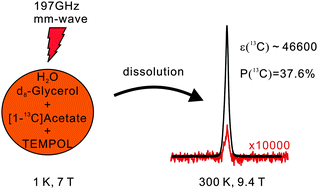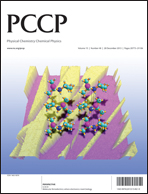Over 35% liquid-state 13C polarization obtained via dissolution dynamic nuclear polarization at 7 T and 1 K using ubiquitous nitroxyl radicals†
Abstract
The most versatile method to increase liquid-state 13C NMR sensitivity is dissolution dynamic nuclear polarization. The use of trityl radicals is usually required to obtain very large 13C polarization via this technique. We herein demonstrate that up to 35% liquid-state 13C polarization can be obtained in about 1.5 h using ubiquitous nitroxyl radicals in 13C-labeled sodium salts by partially deuterating the solvents and using a polarizer operating at 1 K and 7 T.


 Please wait while we load your content...
Please wait while we load your content...